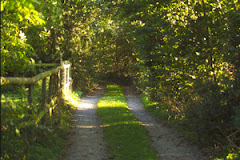
What a fantastic place Parys Mountain is. Although I've been here many times it was with great pleasure to be commissioned by Visit Wales to get some more shots of this spectacular location.
There is so much to say about it I'll let Wikipedia do all the talking.

"The mountain was mined for copper ore in the early Bronze Age, as shown by sub-surface debris nearly 4,000 years old revealed during excavations in 2002. Since then access has been regained to the sealed underground workings of the Parys mine revealing further evidence for this ancient mining. Parys Mountain is thus one of the few sites in Britain where there is evidence for the prehistoric beginnings of the British metal mining industry.
The 18th century miners recognised that they were following in the steps of much earlier workers, an observation that was then linked to the discovery locally of copper ingots bearing Roman inscriptions.

In 1764 Charles Roe of Macclesfield was granted a 21-year lease by the Bayly family to work the mountain for copper. Rowland Pugh, a local miner, discovered the "Great Lode" on 2 March 1768 and was rewarded with a bottle of whisky and a rent-free house for his lifetime.
Although the ore here was of low quality, this was more than compensated for by the fact that it occurred in two large masses close to the surface.[1] Initially ore was worked on the surface from shallow shafts, next by open-pit mining and finally underground from adits or from shafts. The ore was broken into small lumps by hand, the best ore being shipped to Lancashire or to the Lower Swansea valley in South Wales through the port of Swansea for smelting. Copper was concentrated and extracted from the remainder using kilns and furnaces on site.
 It was also discovered that purer metal could be obtained efficiently, although in small amounts, by its precipitation from drainage water with scrap iron in purpose-built ponds. Associated with the mines, important chemical industries were established on the Mountain based on by-products such as ochre pigments, sulphur, vitriol and alum. The processes were described by the German writer and translator, Augustin Gottfried Ludwig Lentin (1764–1823) who visited Parys Mountain in the 1790s and published his findings in Briefe über die Insel Anglesea : vorzüglich über das dasige Kupfer-Bergwerk und die dazu gehörigen Schmelzwerke und Fabriken (Leipzig : Crusius, 1800)
It was also discovered that purer metal could be obtained efficiently, although in small amounts, by its precipitation from drainage water with scrap iron in purpose-built ponds. Associated with the mines, important chemical industries were established on the Mountain based on by-products such as ochre pigments, sulphur, vitriol and alum. The processes were described by the German writer and translator, Augustin Gottfried Ludwig Lentin (1764–1823) who visited Parys Mountain in the 1790s and published his findings in Briefe über die Insel Anglesea : vorzüglich über das dasige Kupfer-Bergwerk und die dazu gehörigen Schmelzwerke und Fabriken (Leipzig : Crusius, 1800)
Parys Mountain dominated the world's copper market during the 1780s, when the mine was the largest in Europe.[2] Its rise severely damaged the mining industry in Cornwall.[1] The copper from the mine was used to sheath the admiralty's wooden ships of war in order to prevent the growth of seaweed and barnacles and to prevent boring by worms. This increased the speed and manoeuvrability of the vessels, although it is said that Parys Mountain copper was also sold to the French for use by their fleet."

47.jpg)

No comments:
Post a Comment